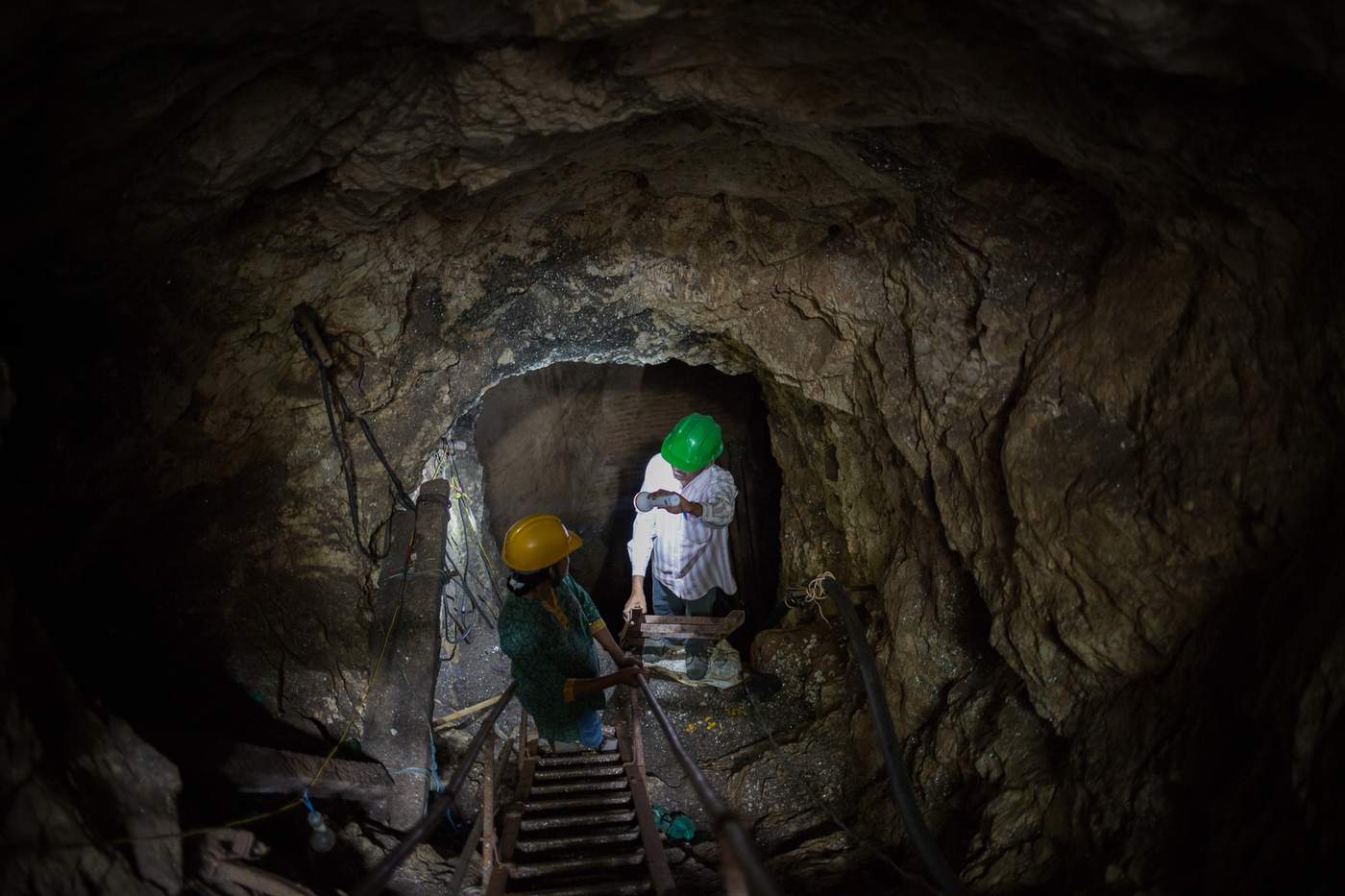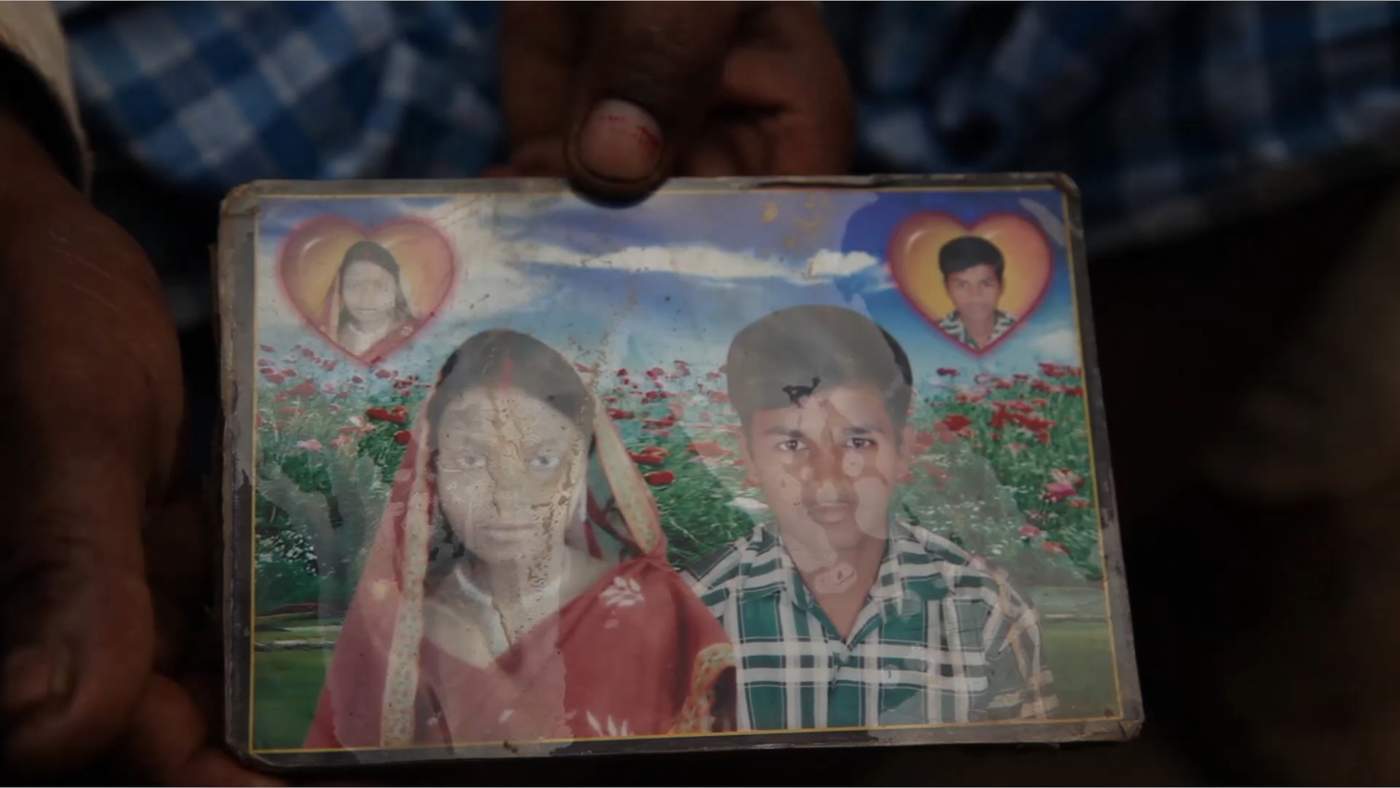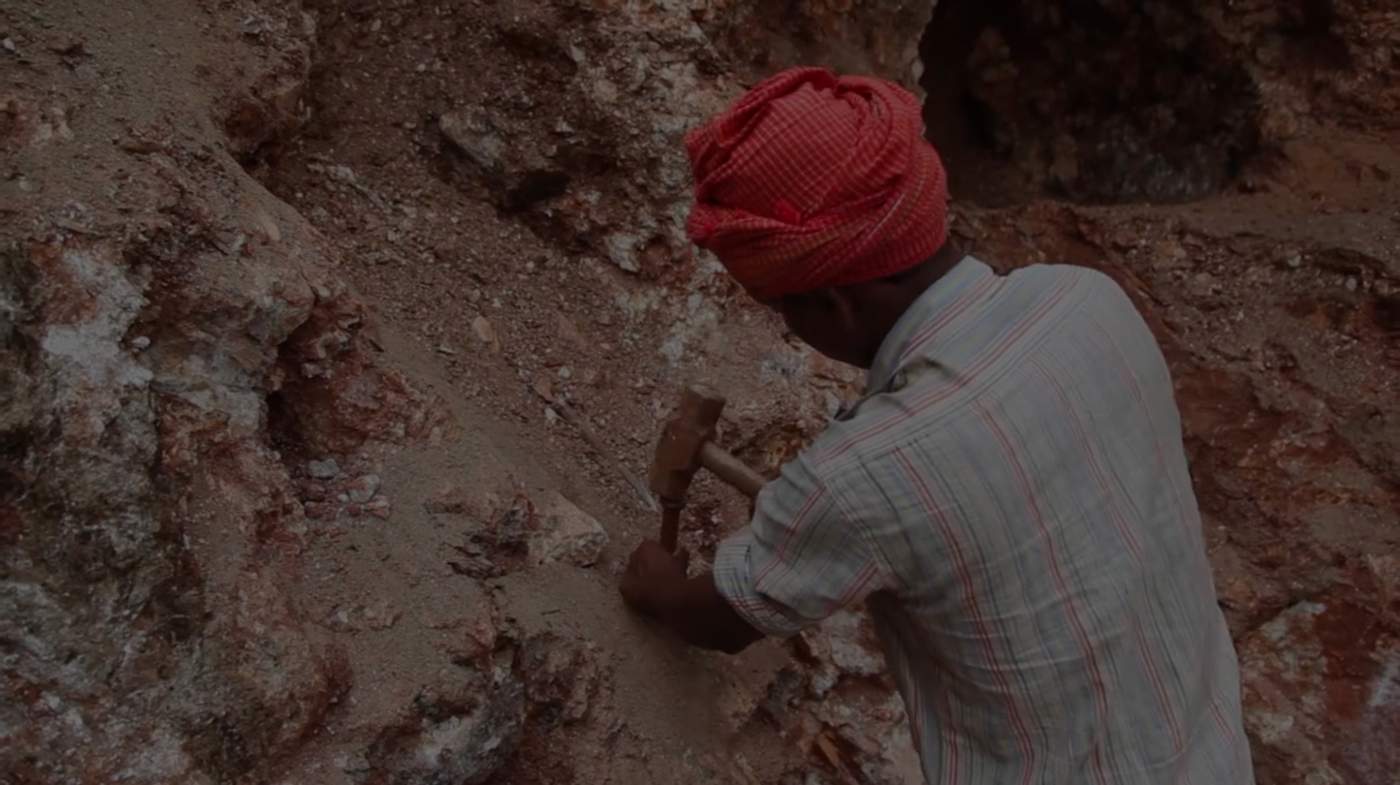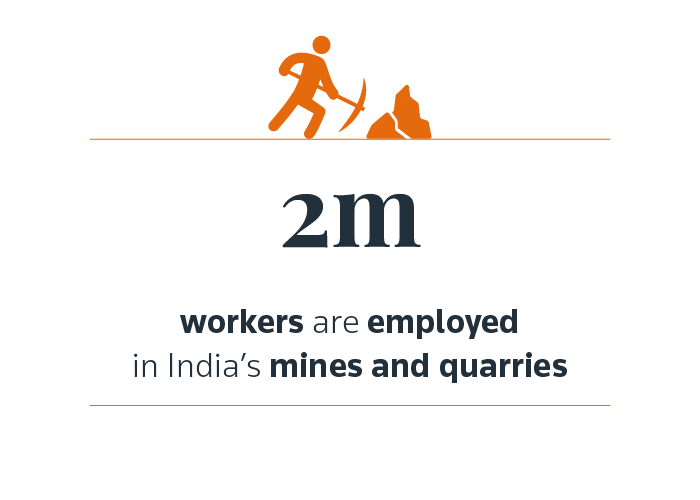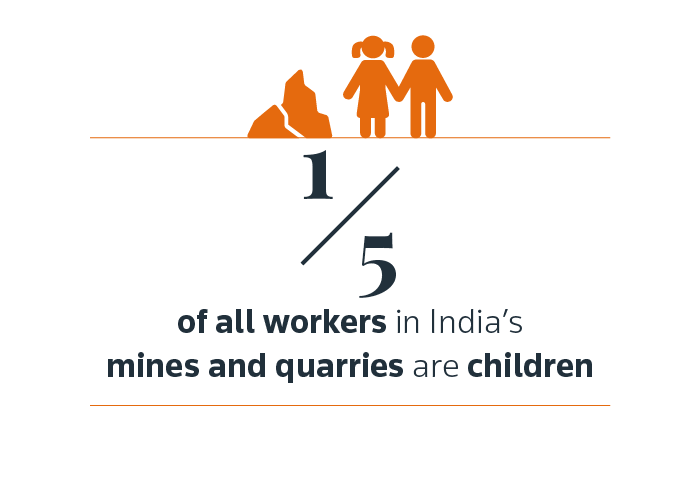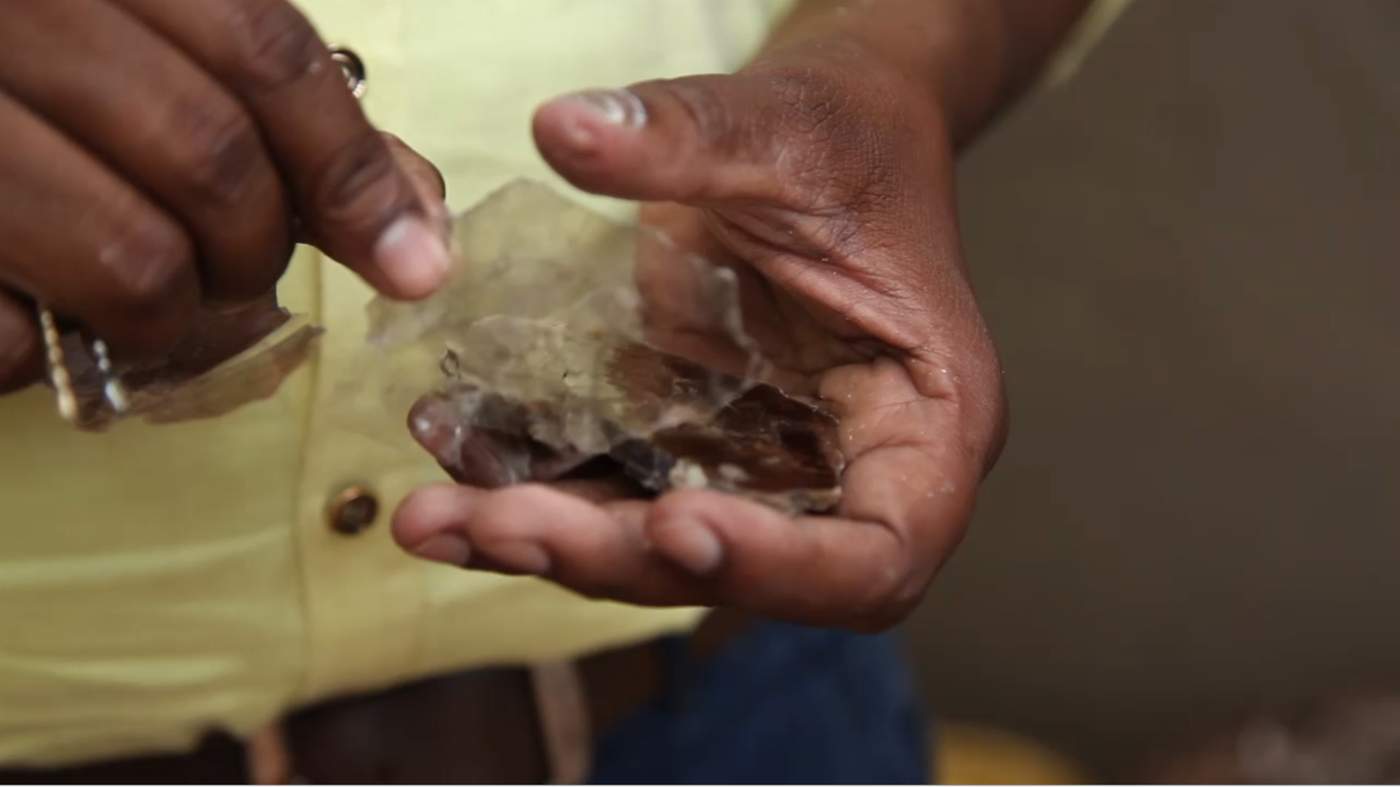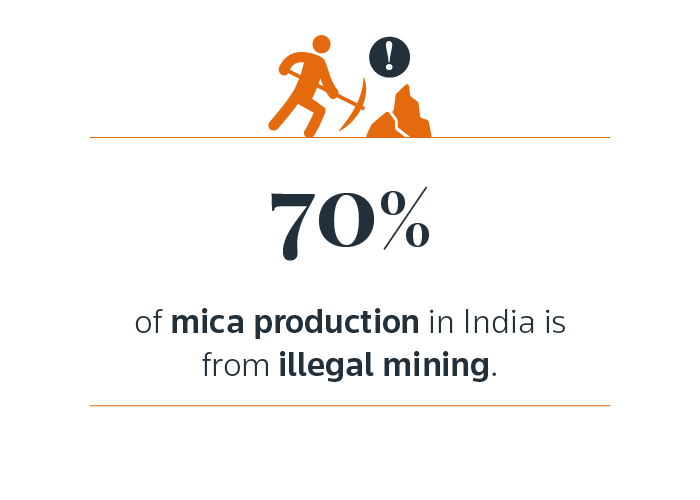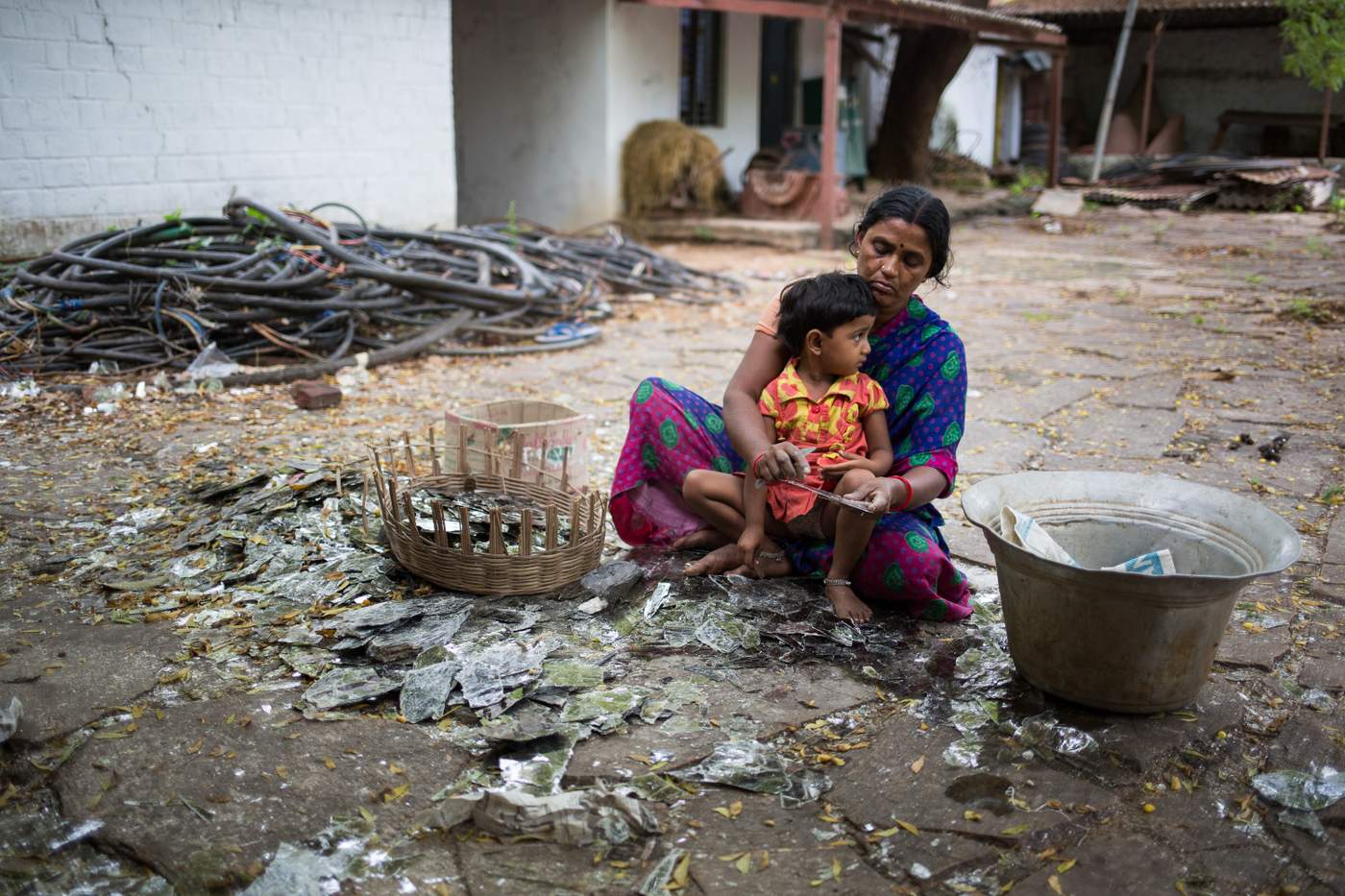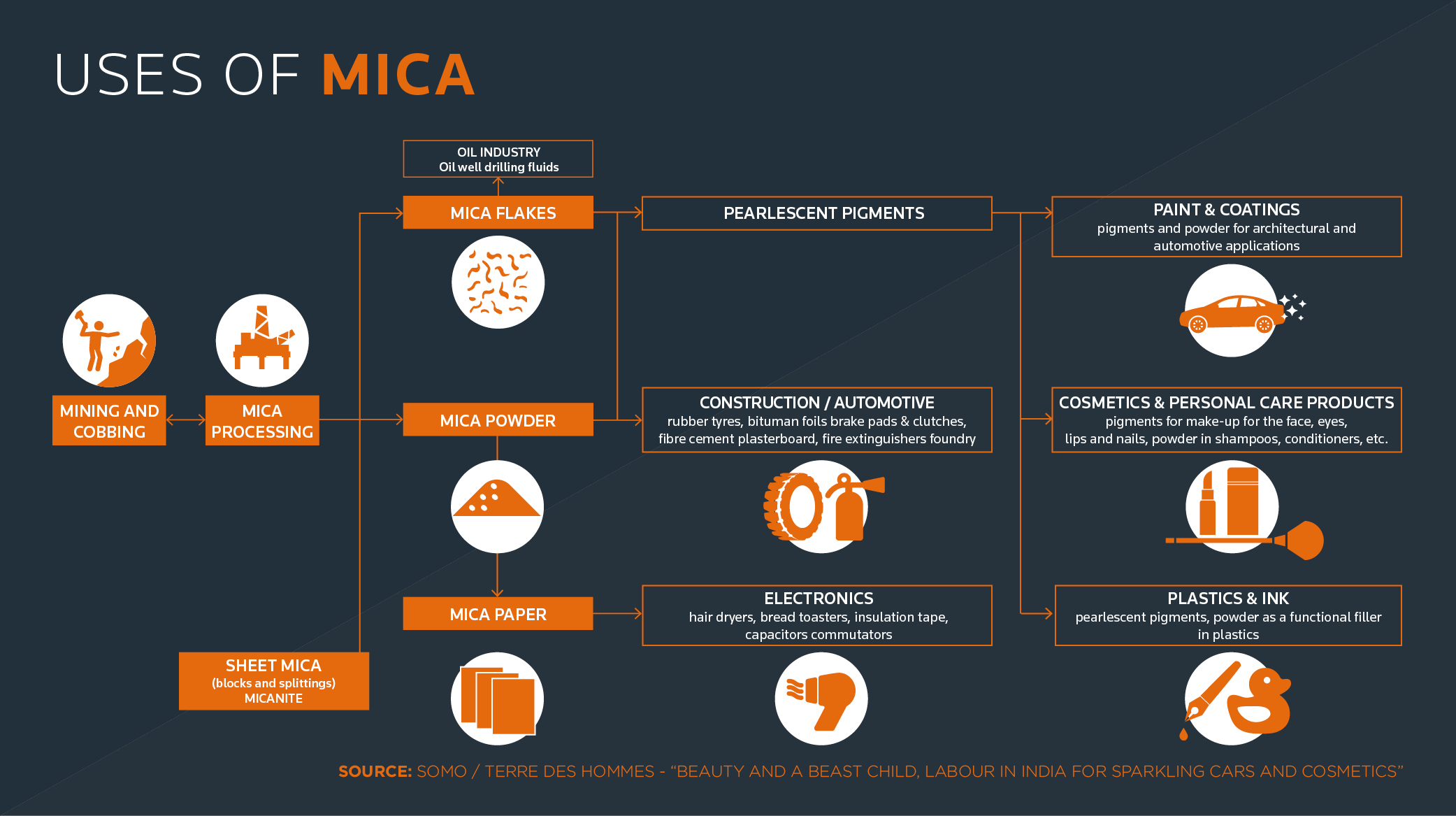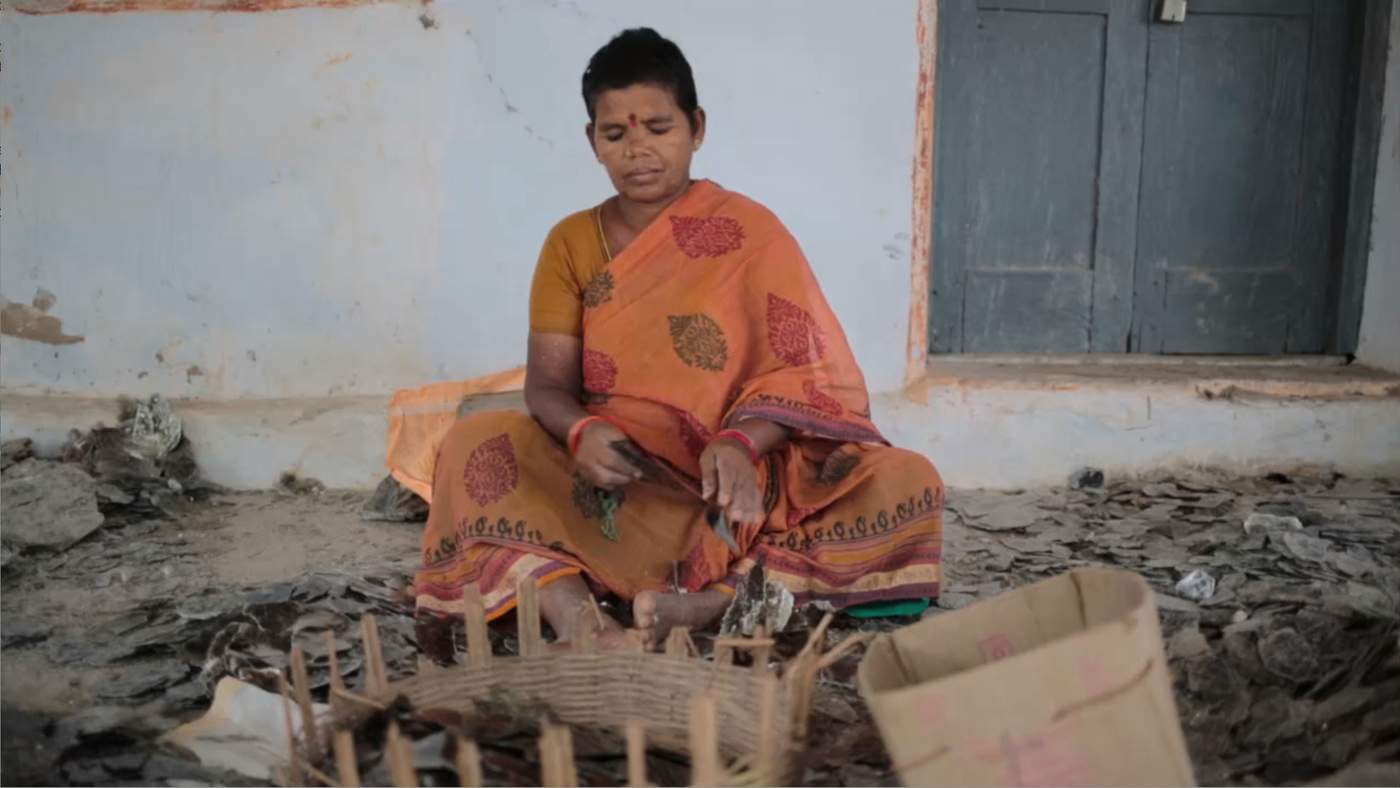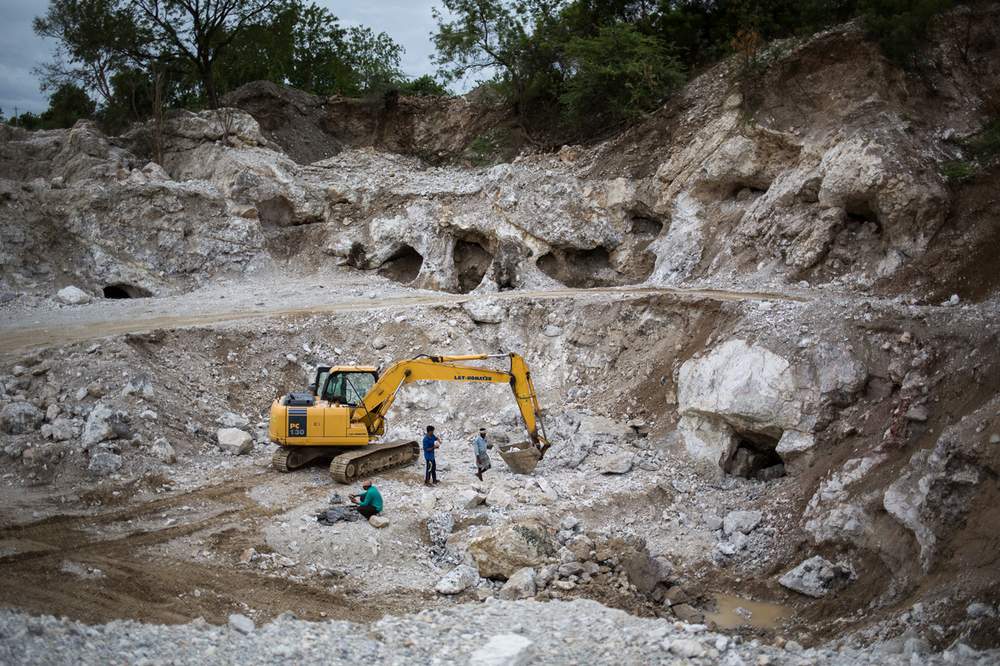In the depths of India's illegal mica mines, where children as young as five work alongside adults, lurks a dark, hidden secret - the cover-up of child deaths with seven killed in the past two months, a Thomson Reuters Foundation investigation has revealed.
Investigations over three months in the major mica producing states of Bihar, Jharkhand, Rajasthan and Andhra Pradesh found child labour rife, with small hands ideal to pick and sort the valued mineral that puts the sparkle in cosmetics and car paint.

Mica is used to create the shimmer seen in many cosmetics.
But interviews with workers and local communities discovered children were not only risking their health by working in abandoned "ghost" mines off official radars, but they were dying in the unregulated, crumbling mines, with seven killed since June.
In the mud-and-brick village of Chandwara in Bihar in eastern India, a father's grief laid bare the ugly reality of the illegal mining that accounts for an estimated 70 percent of India's mica output.
Vasdev Rai Pratap's 16-year-old son Madan was killed in a mica mine along with two other adult workers in the neighbouring state of Jharkhand on June 23.
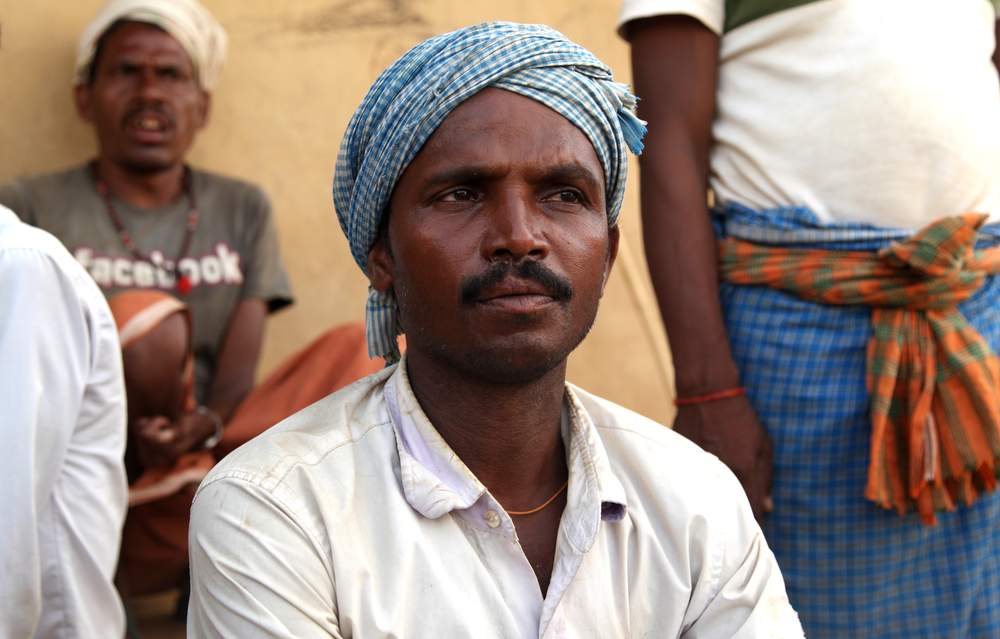
Vasdev Rai Pratap, father of 16-year-old Madan, who died in a mine.
"I didn't know how dangerous the work in the mines is. Had I known, I would never have let him go," said Pratap, sitting on a charpoy - a traditional woven bed - outside his home, surrounded by friends and family who had come to mourn the teen's death.
"They said it took almost a day to dig out his body after the mine collapsed. They cremated him without telling me. I didn't even see my boy before they set him alight."
A spokesman for India's Ministry of Mines said safety in mica mines was a matter for state governments who are facing mounting pressure from the mining industry to grant licences to illegal mines.
Social activists also support these calls, claiming it will help crackdown on the flourishing black market in mica, worker exploitation and abuse and child deaths.
"The central government has no machinery to inspect or control the mines," the spokesman Y.S. Kataria told the Thomson Reuters Foundation.
BBA workers, who have been trying to stop child labour in Jharkhand's mica mines for almost a decade, said Madan's death and the six others in the past two months were just the tip of the iceberg, estimating fewer than 10 percent of mica mine deaths are reported to the police.
"Although there are no official figures on child deaths in the mines as it is all illegal, we hear about them through our networks in the villages where we work," said Raj Bhushan, BBA's Jharkhand Project Coordinator.
"Normally, we hear about 10 fatalities on average in a month. But in June, we documented over 20 deaths, including two of boys aged around 15 years old."
Officials from India's Directorate of Mines Safety were not available to comment on the number of child fatalities.
The National Commission for the Protection of Child Rights (NCPCR), a government organisation, conducted a fact-finding mission in Jharkhand's Koderma and Giridih districts in June and found children as young as eight years old mining mica.
"We didn't get any reports of children being injured or dying due to mine accidents such as collapses as it is all illegal and not reported openly. But it may be happening," said the head of the fact finding mission of NCPCR, Priyank Kanoongo.
A senior official from Jharkhand's labour department, which is responsible for ensuring child labour laws are followed, also said there were no reports of children dying due to mica mining.
"Firstly it is a violation of the law of the land if people are mining without any approval and if they are engaging child labour, they committing a double crime," said Principal Secretary of Jharkhand's labour department S.K.G. Rahate.
In vast open-pits in Jharkhand, children as young as six squatted among glittering rocks scouring with their bare hands for shiny, brittle mica flakes, while older ones descended rickety ladders into shafts seeking better quality silicate.
In Giridih's Tisri area, Basanti sifted through the reddish earth searching for pieces of mica while her 10-year-old son Sandeep climbed into a rat-hole dug in the side of the hill and descended 3 metres (10 ft) to pound on the wall with a pick-axe.
Children speak about their lives working in the mica mines.
His mother said the skinny boy in checked shorts and a white T-shirt has been working in the mines since he was seven and, with his contribution, the family earns 300 rupees ($4) daily.
"I know it's dangerous but that's the only work there is," she said, squatting on the ground, a metal dish partially filled with mica beside her.
"I know Sandeep doesn't want to do it but it is what it is. If he was able to go to school and learn and become something then that's good, but first we need to eat."
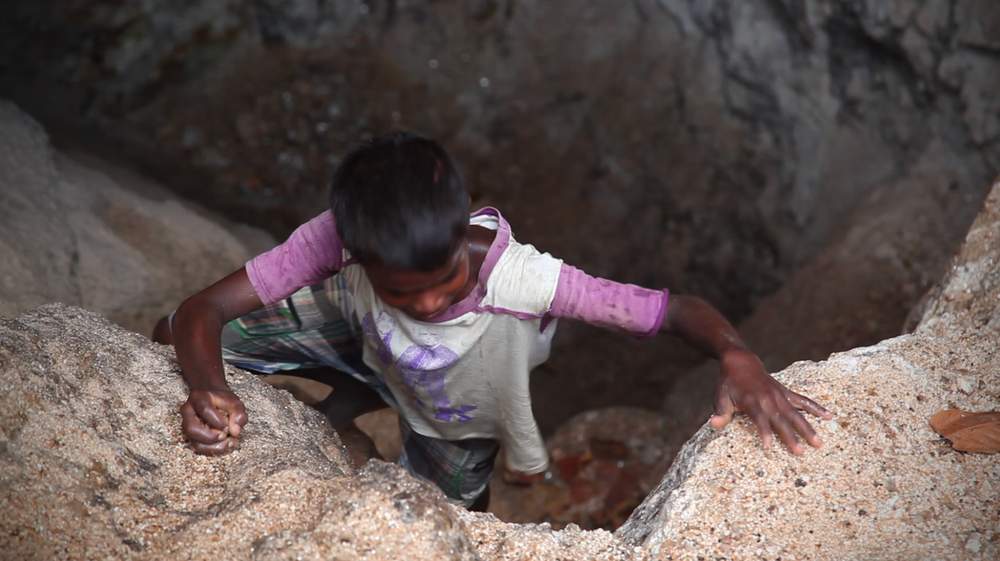
Sandeep, 10, climbs out of a Mica mine in Jharkhand.
In Bhilwara district in Rajasthan, boys as young as five were seen climbing down narrow, crumbling shafts to cut mica with a hammer and chisel, working for up to eight hours a day.
Their sisters sifted and separated the mica on the surface, squatting on their haunches and using their bare fingers. Older girls also separated the mica and took it to a collection point.
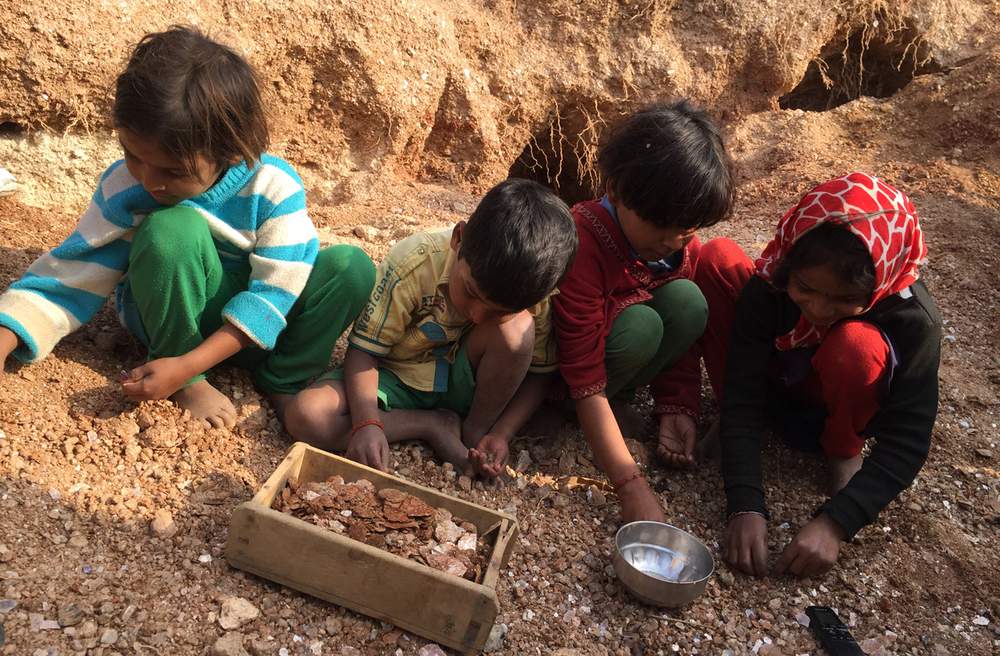
Children sorting Mica in Jharkand,
"Mine owners say the children aren't working inside the mines, they're outside. That they're just earning a little extra for the family," said Rana Sengupta, chief executive of the non-profit Mine Labour Protection Campaign in Jodhpur, Rajasthan.
"But the children have no business being anywhere near the mines, inside or outside. Even adult mine workers aren't safe."
At a mine in Bhilwara's Tiloli village, two young girls sat on a mound of dirt, sorting mica pieces by the side of a mine partly filled with rain water.

Pooja, 9, sorting mica outside a mine in Bhilwara.
"I don't go into the mine. It's too deep, I get scared," said Pooja, who looked about seven years old. "I sort bigger pieces from smaller pieces. It's not so hard."
Dhanraj Sharma, a commissioner in Rajasthan's Labour Ministry, said he was not aware of child workers in the mines in Bhilwara or "anywhere else in the state".
"Their parents are working in the mines, and the children stay with them. They may be playing there, they may be doing some small things for the parents. That doesn't mean they are working," he told the Thomson Reuters Foundation.
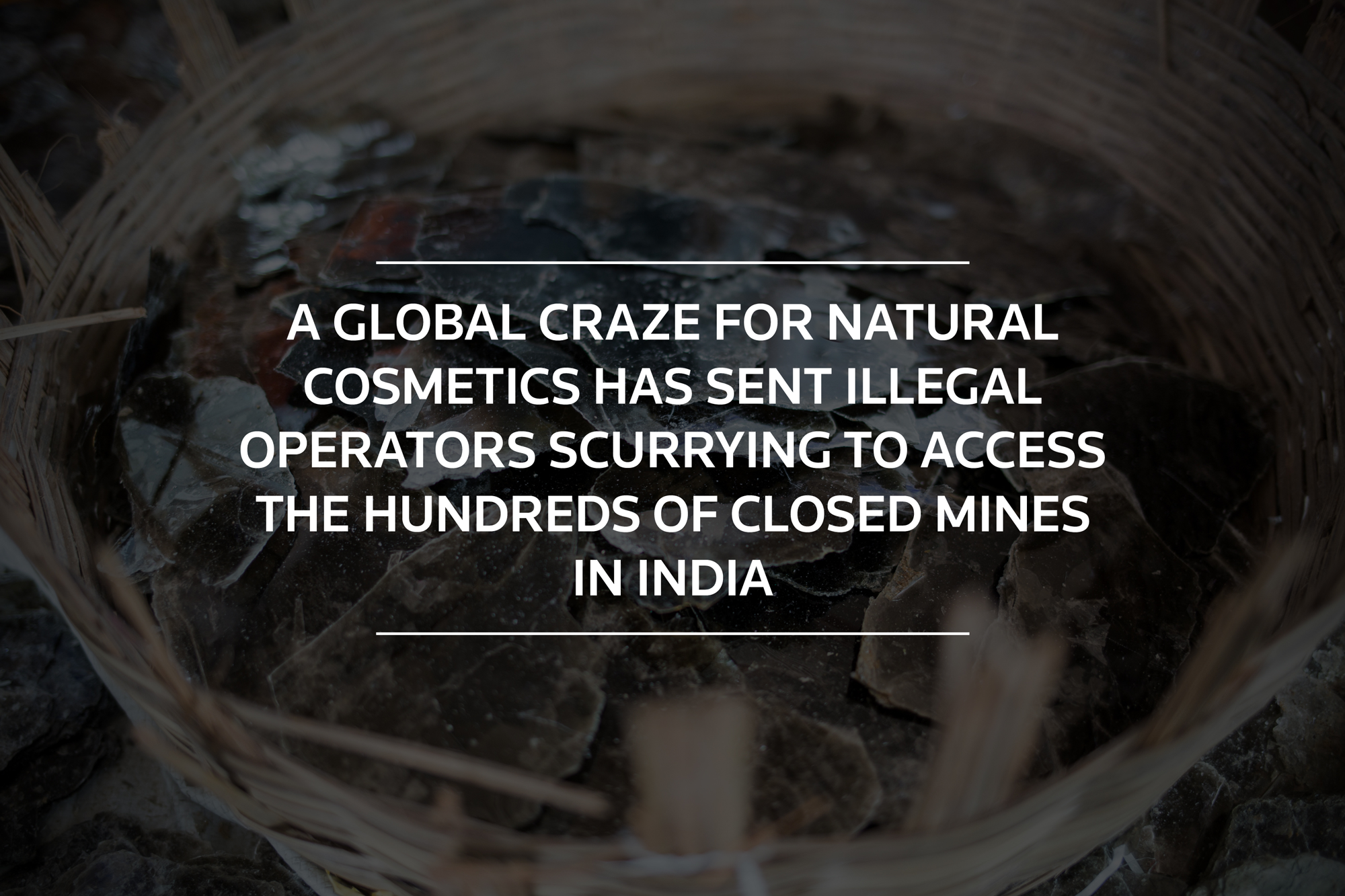
The recent surge in demand for mica has revived a flagging industry in India that dates back to the late 19th century when the British discovered mica in a belt spanning Jharkhand's Koderma, Giridih and Hazaribag and Bihar's Nawada, Jamui, Gaya and Bhagalpur districts.
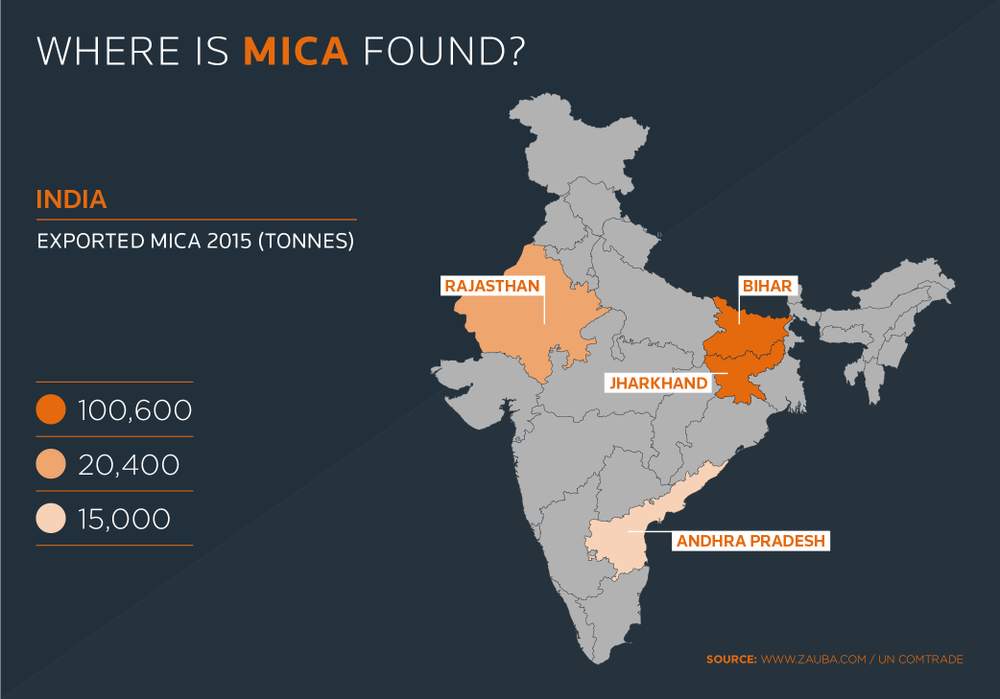
Once boasting over 700 mines with over 20,000 workers, the industry was hit by 1980 legislation to limit deforestation and the discovery of substitutes for natural mica, forcing most mines to close due to cost and stringent environmental rules.
In 2013/14 India only had 38 reporting mica mines, according to India's Bureau of Mines.
But renewed interest in mica from China's economic boom and a global craze for "natural" cosmetics has sent illegal operators scurrying to access the hundreds of closed mines in India and created a lucrative black market.
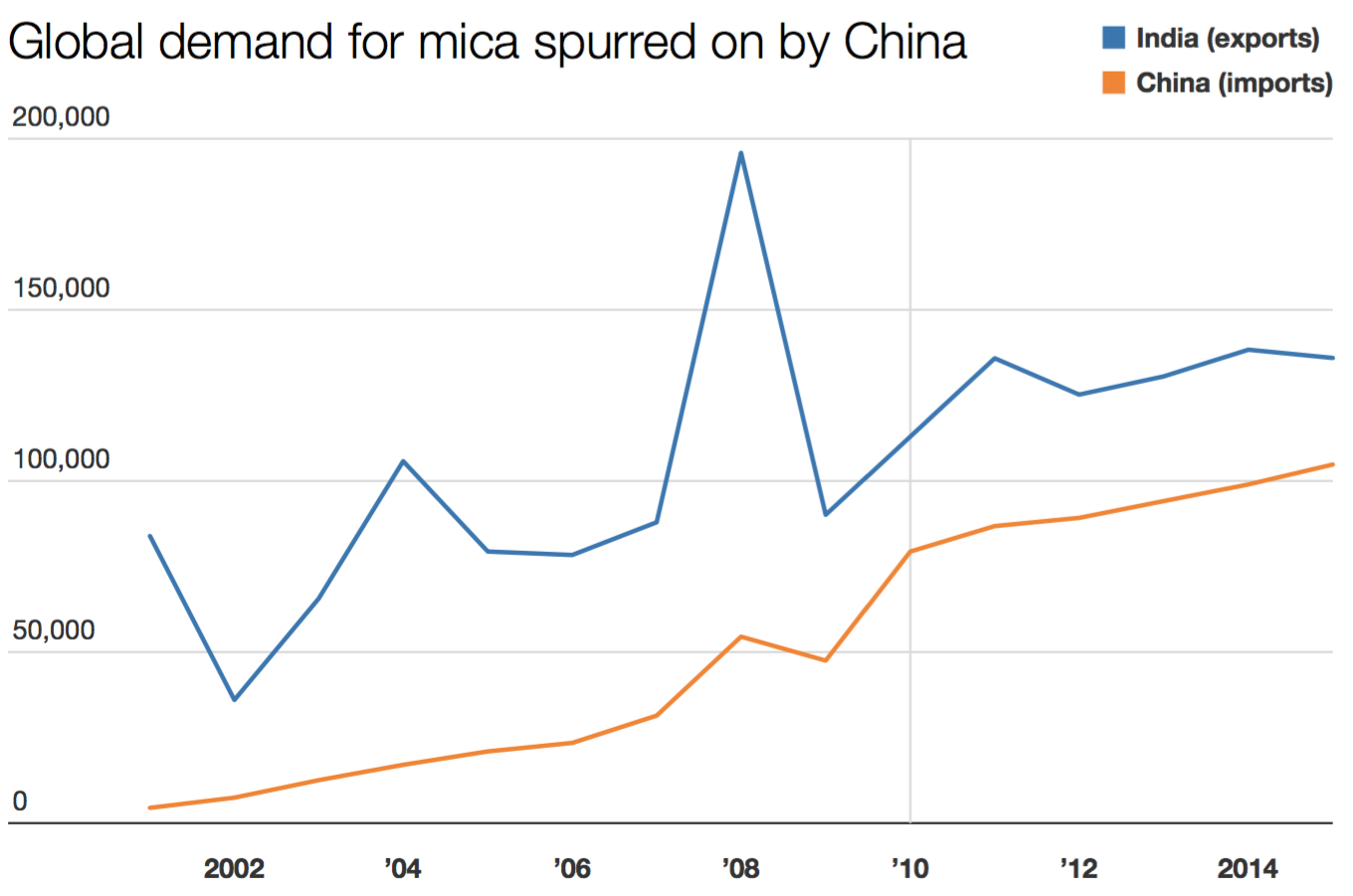
A chart showing a 15-year rise in Chinese imports of mica, with Indian mica exports following a similar trend.
Figures from India's Bureau of Mines show the country produced 19,000 tonnes of mica in 2013/14.
But the same data shows exports were 128,000 tonnes, with more than half, or 62 percent, going to China followed by Japan, the United States, the Netherlands and France.
Despite numerous emails and phone calls, no one could be reached at the Bureau of Mines to comment on the discrepancy in the numbers.
While the industry is economically unfeasible for some countries due to the need for manual labour, it remains a key earner in India where labour costs are low - particularly when child workers are used.
Child rights campaigners say authorities have overlooked these child labourers for years but hope drawing attention to child deaths in the mica mines may highlight the dangers and force governments to act.
Occupational hazards include head injuries, cuts and abrasions, skin and respiratory infections like silicosis, tuberculosis and asthma - but the risks from mining in poorly maintained, unregulated mines were also proving lethal.
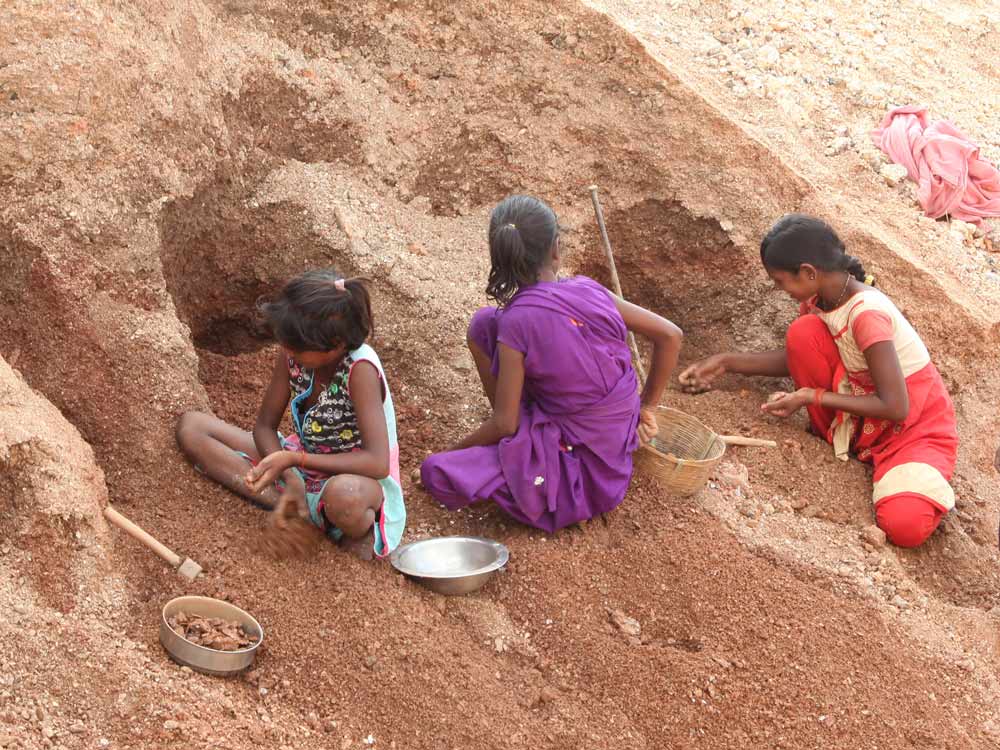
Children collecting scrap mica from a mine in Jharkhand.
BBA's Bhushan said he and his workers met with most of the families of those who died in mining accidents in June, and found their only means of survival was this unlicenced mining.
"All were poor households who are dependent on mica mining for an income," Bhushan told the Thomson Reuters Foundation.
"They fully understand these places are death traps, but they also realise they have little choice but to go back there the next day. It is essential that authorities address this issue before more children die."
In a huge open quarry inside the dense forests of Domchanch in Koderma district in Jharkhand, Sushila Devi diligently pounds at glinting grey rocks with a hammer, breaking away chunks of mica and tossing them into a large plastic basin.
The 40-year-old mother of six has been collecting mica every day for over a decade, yet she - like most other workers - has no idea what it is or its price on the global market.
"We don't know what mica is, where it goes and what it is used for. All I know is that if I work hard and collect it, I will get some money," she said, adding that she gathers around 10 kg of the mica daily which earns her 80 rupees ($1).
Sushila Devi, who says she would fall into debt if her children didn't work alongside her in the mica mines.
"We take it to a nearby mica dump and the dealer buys it for 8 rupees per kilo. I don't know how much he sells it on for. He would never tell us. Why would he risk losing more profit?"
The mark-up is huge, say activists. Mica is bought from miners at a maximum of 25 rupees (40 cents) a kilogram, yet top quality sheet or "ruby" mica sells for up to $2,000 a kilogram, according to USGS data, helping boost demand for synthetic mica.
British cosmetics company Lush, which prides itself on its handmade products and ethical trading, stopped using natural mica in 2014 due to concerns about child labour.
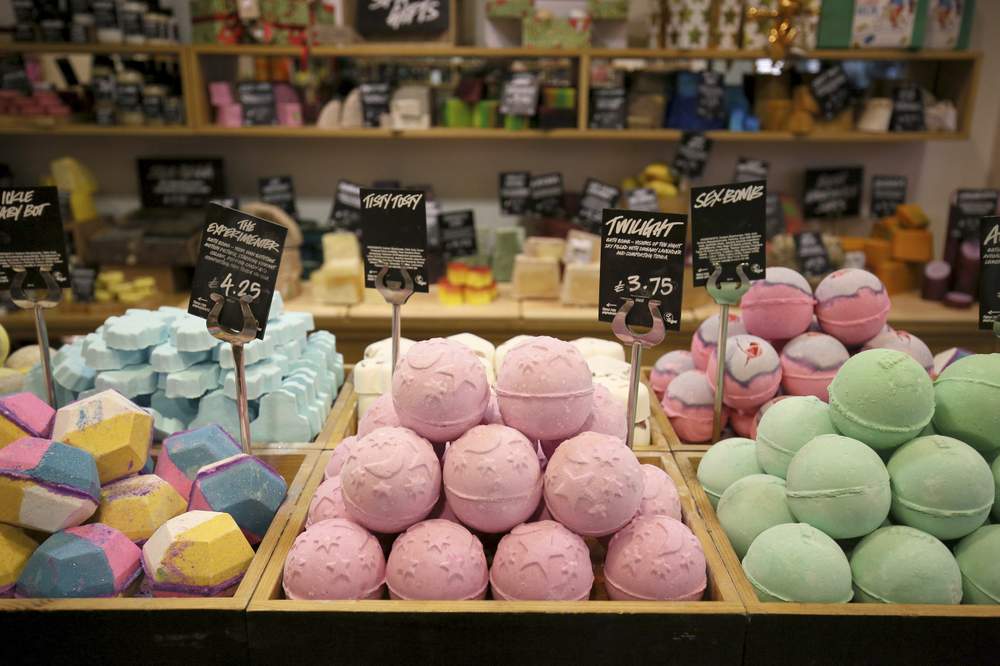
Lush's head of ethical trading Simon Constantine said he knew something was amiss when armed guards were needed to accompany auditors to one Indian mine supplying their mica.
But the retailer, which has stores in almost 50 countries, then discovered this year that the synthetic mica it was using instead also had traces of natural mica. The company said it is tackling that.
"Mica took us a bit off guard as it was a new material that we had not really used before," Constantine told the Thomson Reuters Foundation in an interview in Lush's head office in the English south coastal town of Poole.
"But buying is an imperfect system that doesn't end ... it's always more of an improvement than a finished product."
Up to 10 percent of mica globally is used in cosmetics.
Estee Lauder Cos Inc is another cosmetics company using mica in its products but said it only sourced 10 percent of its mica from India and was working with BBA to tackle child labour, helping fund schools in villages in mica areas.
"We strongly believe that education is a cornerstone in this effort, helping young people stay in school and providing the skills that will allow them to later on get work outside the mica industry," Estee Lauder said in an email statement.
"While this programme has yet to end child labour in mica mines, it shows that responsible business practices and sustained collaboration can create better prospects for children living in the mica-mining region."

L'Oreal said more than 60 percent of its natural mica came from the United States while the rest came from other countries including India.
"In India, mica mainly originates from socially and economically challenged regions where there is a risk of child labor, unsafe working conditions, and where the supply chain involves multiple actors," the company said on its website.
L'Oréal said it was important all players worked together and a summit in February in Delhi on responsible mica sourcing, organised by French non-profit organisation the Natural Resources Stewardship Circle (NRSC), was a good first step.
NRSC's Executive Director Catherine Peyreaud said child abuse in mica had been going on for years but it was only when revelations about mica being used in cosmetics hit global headlines two years ago that action started to combat the problem.
She said NRSC was now completing a five-year plan with concrete steps to tackle child labour and improve living conditions in mica areas so children did not return to mining.
In Koderma's Dhab, one of about 45 villages where BBA is working, Pooja, 13, proudly shows off the run-down school she has attended for almost two years since she left mica mining.
Dressed in her school uniform - a pristine white short-sleeved shirt and a navy skirt - the bare-footed girl excitedly points at a row of locked blue doors of the one-storey white-washed building.
Pooja, 13, has been rescued from the mica mines and has returned to school
"I like going to school. I have friends here and I get to play and also get to study and learn things. I am happy that BBA came and helped our parents to understand that making children work is not good," said Pooja, adding that she would like to be a teacher when she grows up.
"The mining was dangerous. When we were down there, we were always looking up thinking the earth and rocks might fall on us. It happened to me once, but I managed to get out as my friend Munni helped me. I got badly hurt that time."
Pooja is one of the lucky ones and many more companies sourcing mica from India are now making efforts to stop children from working in the mines and provide alternatives.
German drugmaker Merck KGaA discovered children were collecting mica at mines used for its supplies in 2008 so cut some of its suppliers and now only sources from Jharkhand and child-free legal mines.
The company said in a website statement that it had also set up mica sources in the United States and Brazil and was producing some effect pigments based on synthetic mica.
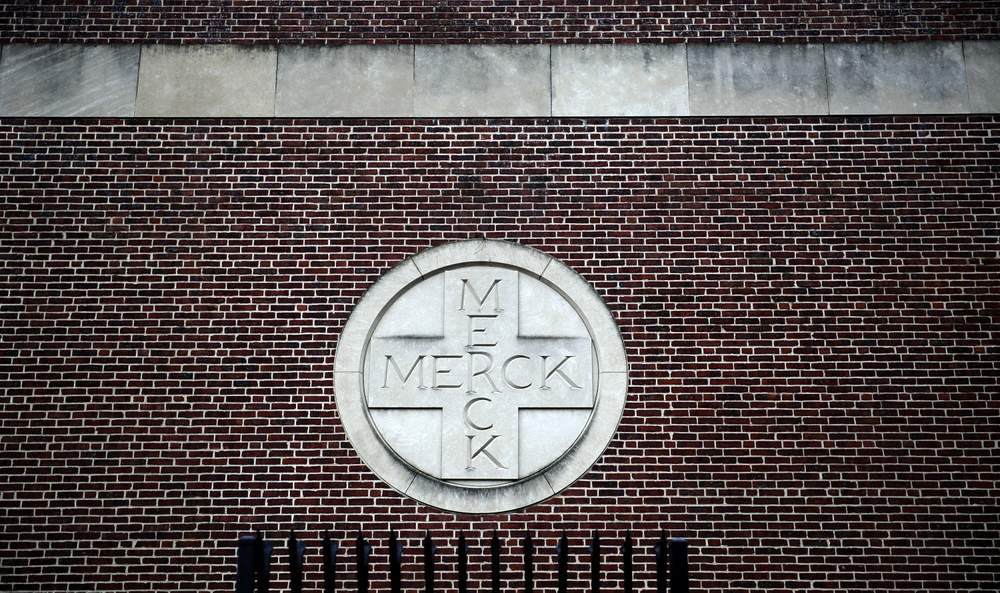
Another major buyer, Chinese pigment manufacturer Fujian Kuncai Material Technology Co Ltd, said its audits had found no evidence of child labour in its supply chain although acknowledged that it was a complex challenge.
A Fujian Kuncai spokesman said the company was setting up its own firm in India to buy directly from - and audit - mines.
It was also joining forces with child rights group Terre des Hommes and helping to fund a programme to save 10,000 children from child labour in Koderma and Giridih districts of Jharkhand.
"Alone one cannot make the difference and we are looking forward to work together reaching our shared ambition: no child labour in the mica supply chain," the spokesman said.

